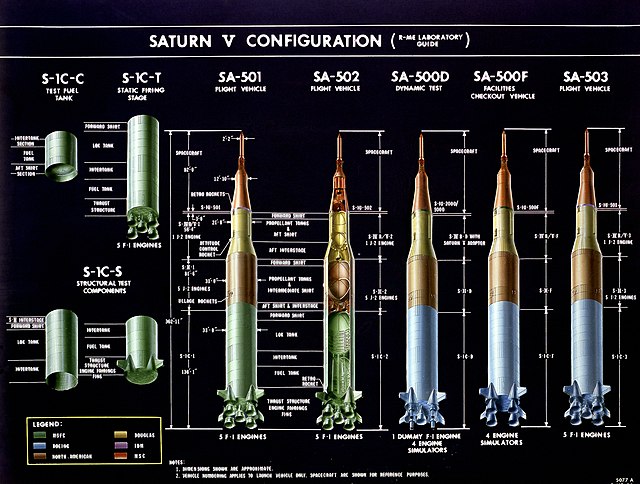The Saturn V is a retired American super heavy-lift launch vehicle developed by NASA under the Apollo program for human exploration of the Moon. The rocket was human-rated, had three stages, and was powered by liquid fuel. Flown from 1967 to 1973, it was used for nine crewed flights to the Moon, and to launch Skylab, the first American space station.
The launch of Apollo 11 on Saturn V SA-506, July 16, 1969
Saturn V testing vehicle and flight vehicle configurations
Von Braun with the F-1 engines of the Saturn V first stage at the U.S. Space and Rocket Center.
All Saturn V launches, 1967–1973
The National Aeronautics and Space Administration is an independent agency of the U.S. federal government responsible for the civil space program, aeronautics research, and space research. Established in 1958, it succeeded the National Advisory Committee for Aeronautics (NACA) to give the U.S. space development effort a distinct civilian orientation, emphasizing peaceful applications in space science. It has since led most of America's space exploration programs, including Project Mercury, Project Gemini, the 1968–1972 Apollo Moon landing missions, the Skylab space station, and the Space Shuttle. Currently, NASA supports the International Space Station along with the Commercial Crew Program, and oversees the development of the Orion spacecraft and the Space Launch System for the lunar Artemis program.
NASA Headquarters in Washington, D.C.
A U.S. Air Force Bell X-1 test flight
Launch of the Army Ballistic Missile Agency's Explorer 1, America's first satellite
Launch of Friendship 7, NASA's first orbital flight, February 20, 1962








